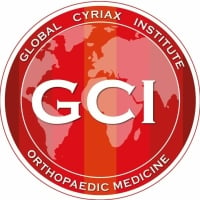
Tennis and golfer's elbow, how to diagnose and to treat
Tennis elbow – clinical image
A tennis elbow could be a post traumatic lesion, but mostly it is the result of a repetitive strain injury, in which different factors play a role :
- Degeneration and relative avascularity
- Repeated gripping action
- Fibrous scar tissue and contracture.
The patients describes pain at the lateral aspect of the elbow, possibly radiating into the forearm and middle three fingers.
Sometimes slight paraesthesia are also described.
It happens that the pain is more localized at the lateral epicondyle.
Mostly there’s no pain at rest, but wrist extension activities are painful.
In acute cases, activities involving wrist extension could be painful and weak.
There is no weakness because of a rupture or a nervous problem, but just because of the fact that the movement is too painful. Sometimes the patients drops things (e.g. while pooring out coffee).
Just shaking hands in a firm way already could provoke the symptoms.
On examination, a positive wrist extension against resistance is found.
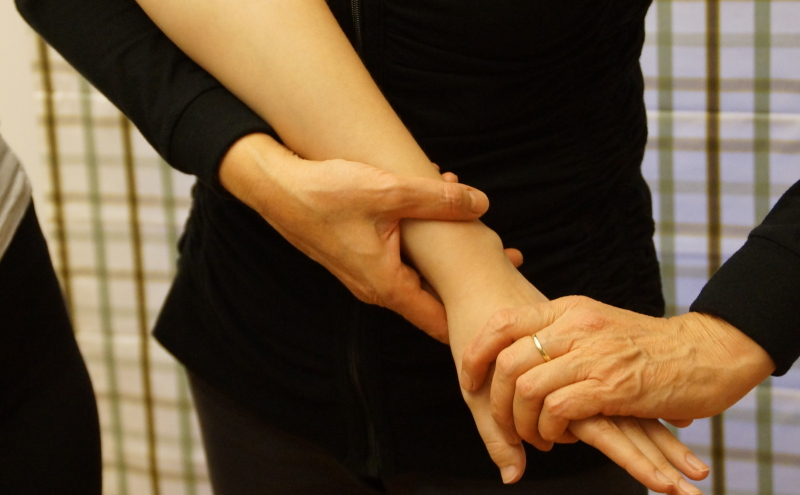 Resisted wrist extension
Resisted wrist extension
In theory, we can think of six different muscles :
extensor carpi radialis longus and brevis
extensor carpi ulnaris
extensor digitorum communis
extensor indicis proprius
extensor digiti quinti.
If we repeat the test, this time with an active finger flexion, and it remains positive, we can already eliminate three of the six muscles (the finger extensors).
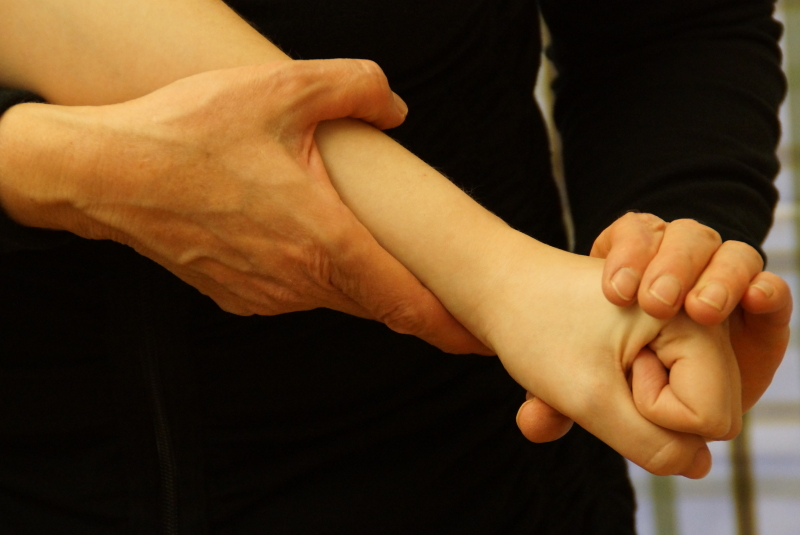 Resisted wrist extension with active finger flexion
Resisted wrist extension with active finger flexion
Further differentiation, between radial and ulnar wrist extensors, is obtained by resisted radial and ulnar deviation.
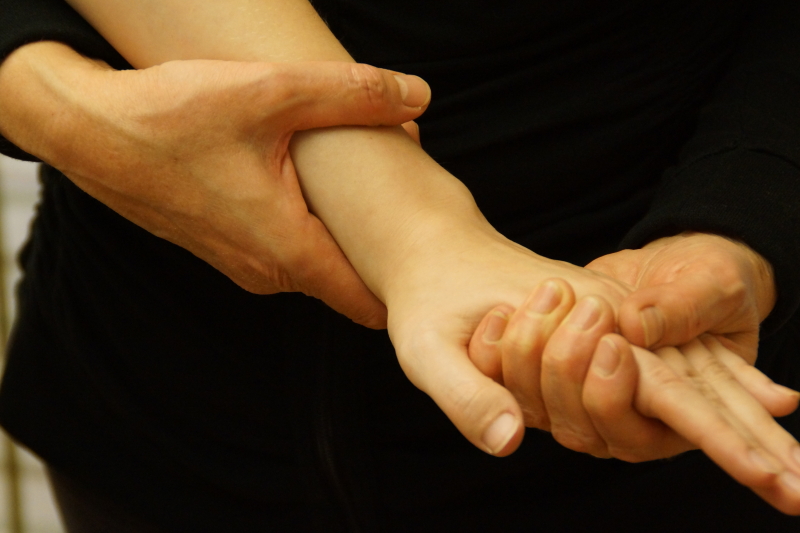 radial and ulnar deviation against resistance
radial and ulnar deviation against resistance
When we suspect that the radial extensors are the culprit, palpation comes in to find the precise localization. We palpate four different spots for tenderness, bilaterally.
The patient will tell us which spot is the most tender one.
We describe 4 different types :
- Type 1 : supracondylar aspect, origin extensor carpi radialis longus
- Type 2 : tenoperiosteal aspect of the extensor carpi radialis brevis
- Type 3 : body of the tendon of the extensor carpi radialis brevis
- Type 4 : muscle belly of the brevis/longus
Type 2 is the most frequent one and mostly also the most invalidating one (more pain, loss of grip function, more radiation of pain).
It is possible that the patient suffers from a combined lesion type 1+2 or 2+3.
A type 4 is very rare (although many patients describe symptoms in that area, but this is merely the result of referred pain, while the local palpation for tenderness is negative).
Empirically a type 2 shows a tendency for spontaneous recovery in about one year, if the patient is younger than 60 years and didn’t receive a corticosteroid injection before.
All types can react well on transverse friction massage, except for the type 2.
Type 2 is an exception : in that case we could use a preliminary friction massage followed by the Mill’s manipulation.
Tennis elbow treatment options
Several options are described such as :
- Transverse friction massage + Mill’s manipulation
- Longitudinal stretch exercise ; eccentric exercise ; loading exercise
- Shockwave (RSWT)
- Infiltration / prolotherapy
- Tenotomy
- Myofascial - needling - ...
Infiltration
A favourable result is obtained in 2/3 of acute cases. It is absolutely necessary for the patient to spare his arm for one week, before he gradually tries out normal activities again. Check about ten days after the first infiltration : if the resisted test still hurts, another infiltration is needed, again with avoidance of exertion for one week.
The disadvantage hower is, that after infiltration, we cannot exclude a recurrence.
The patient will need more active treatment as described below.
Transverse friction massage and Mill’s manipulation for a type 2 tennis elbow
Often it happens that, during the first 7 sessions, the patients doesn’t describe any amelioration. So, don’t give up too early 😊
The manipulation aims to elongate adhesions interfering with the mobility of the tendon at its insertion and within the adjacent structures, making the area mobile and pain- free
The obtained elongation must be maintained through a stretch program at home.
Patients often ask : “do I need to wear this protective brace around my forearm ?” Well, if they feel subjectively more comfortable by doing so then they can do so during some more intensive activities.
Do they have to spare their arm ? In case of a type 2, they don’t : all activities are allowed, but automatically patients don’t do all activities because it might be too painful.
In about 30% of the cases this particular treatment strategy is not successful ; the problem is that we don’t know the predisposing factor(s) which may lead to a successful or non-successful strategy.
Sclerosant infiltrations – prolotherapy
I refer to the course hand out on infiltrations written by Dr Jan Claeys, MD and the latest book of Dr Giuseppe Ridulfo, MD .
Tenotomy
In practice, this approach is successful in only half the cases.
Tennis elbow palpation and friction massage techniques / manipulation
Transverse friction massage type 1 tennis elbow
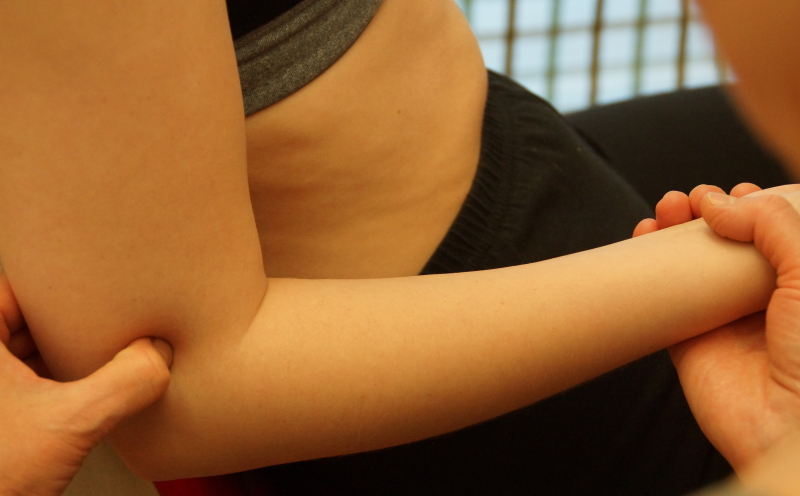 Type 1 tennis elbow transverse friction massage
Type 1 tennis elbow transverse friction massage
The starting position is 90° flexion and supination. Put the thumb lateral to the lateral epicondyle, then put the thumb a few centimeters higher until you reach the sharp edge just above the lateral epicondyle. Flex the thumb 90°, so that the thumb-nail now faces forwards.
A reserve of skin is given upwards and pressure is applied on the anterior aspect of humerus. The active phase of the deep friction is an arm movement downwards with pressure in a posterior direction, followed, as always, by a phase of relaxation.
Make sure you perform an arm movement and not just a finger movement.
Transverse friction massage type 2 tennis elbow
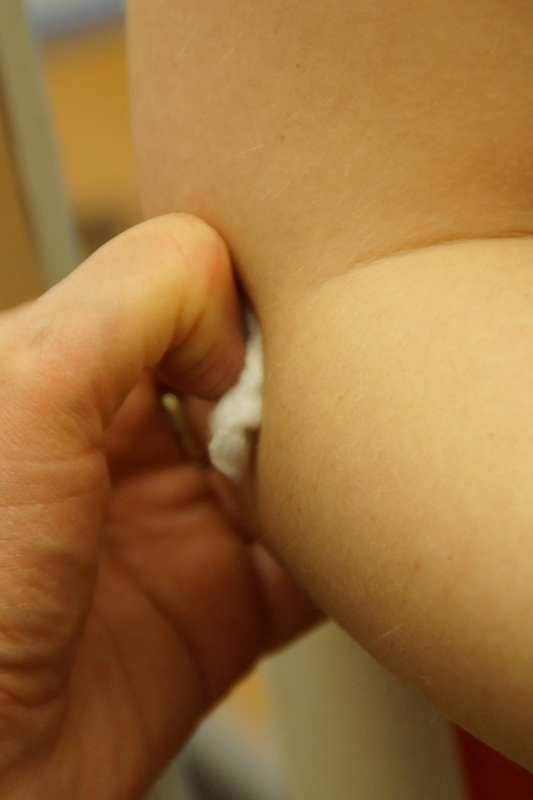 Type 2 tennis elbow transverse friction massage technique
Type 2 tennis elbow transverse friction massage technique
The starting position is 90° flexion and supination. The therapist’s thumb is 90° flexed, with the tip of the thumb lateral to the lateral epicondyle. The deep friction has to be given at the front of the epicondyle, therefore the therapist brings his thumb now onto the anterior aspect of the bone. The active phase of the deep friction is a translation movement at the front of the lateral epicondyle, with pressure applied in a medial/downward direction.
To avoid losing contact with the lesion, the patient should not abduct his arm, nor should our thumb be put too high or too flat.
Make sure to perform an arm movement and not a thumb movement only.
Always use a layer of cotton wool between finger and skin, in order not to damage the skin.
(be aware of longer finger 😊).
Mill’s manipulation
 Mill's manipulation for type 2 tennis elbow
Mill's manipulation for type 2 tennis elbow
Always check the range of extension first : 180° is a minimum (185°-190°= OK). If the patient has a limited extension because of e.g. arthrosis, then the manipulation is contraindicated.
Three elements have to be built in : maximal wrist flexion (the patient’s arm is in medial rotation, the therapist’s thumb between thumb and index finger of the patient), maximal elbow extension and finally a step sideways behind the patient’s back. The latter element is necessary for not loosing the maximal wrist flexion. Make sure the patient is in a position as comfortable as possible.
The procedure is done in four steps : first medial rotation at the shoulder, then wrist flexion, elbow extension, and lastly a little step sideways. These elements have to be
co-ordinated and the manipulation itself then becomes a combination of these last three elements.
Notice that the manipulation is performed with high velocity, small amplitude and without any strength at all. The crack, possibly heard on manipulation, has no therapeutic value.
If manipulation cannot be performed because of contraindications, concentrate on passive stretching exercise, without the manipulative impulse. (and of course, let’s not forget other exercises too).
Transverse friction massage type 3 tennis elbow
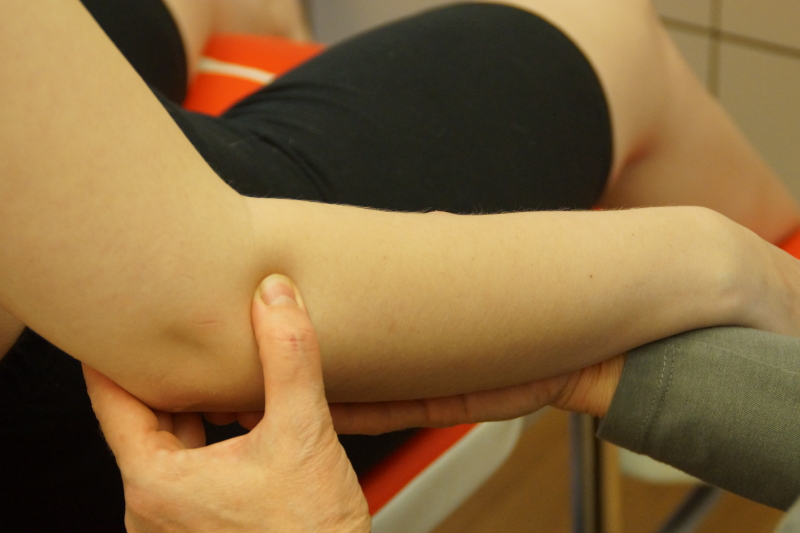 Type 3 tennis elbow transverse friction massage
Type 3 tennis elbow transverse friction massage
The starting position is ¾ of extension and pronation. First look for the precise localization : which spot is most tender: the tendon level with the joint line or level with the radial head? The thumb is put as flat as possible on the lesion, a reserve of skin is taken in a medial direction, pressure is applied and the active phase of the deep friction is a movement in a lateral direction.
Transverse friction massage type 4 tennis elbow
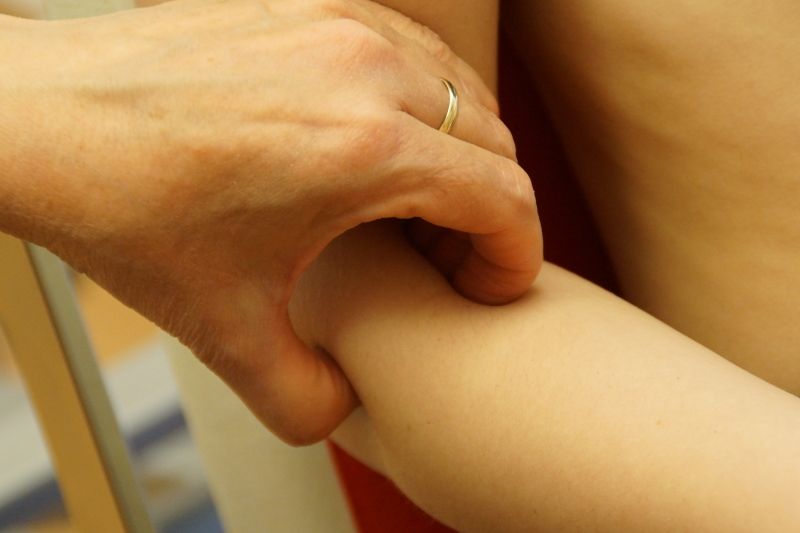 Transverse friction massage type 4 tennis elbow
Transverse friction massage type 4 tennis elbow
The starting position is 90° flexion and supination. Level with the neck of the radius, a pinching grip with all fingers is used ; the muscle belly is lifted upwards as it were.
Golfer’s elbow – clinical image
We refer to a lesion of the wrist flexors.
Clinical image :
The patients describes pain at the medial aspect of the elbow, possibly with some radiation in a distal direction.
Activities involving wrist flexion are painful. The functional disturbance and intensity of the pain is not so dominant as in a tennis elbow. A golfer’s elbow, in comparison with tennis elbow, is generally less painful and less disabling, there are no twinges, the pain does not radiate far.
The resisted wrist flexion is positive, probably together with resisted pronation, although there is no lesion of the pronator teres muscle. (The pronator originates partly from the common flexor tendon ; its contraction can create some extra tension at the flexor lesion.)
On palpation, two types can be distinguished :
>>> Type 1 : Tenoperiosteal junction
Look for the lesion at the front of the medial epicondyle (do not palpate too far laterally in order to avoid pressure on the median nerve).
>>> Type 2 : Musculotendinous junction
Level with the inferior edge of the medial epicondyle (approx. 1-2 cm more distally).
Both types react very well on transverse friction massage. Type 1 is the most frequent one.
Golfer’s elbow friction massage techniques / infiltration
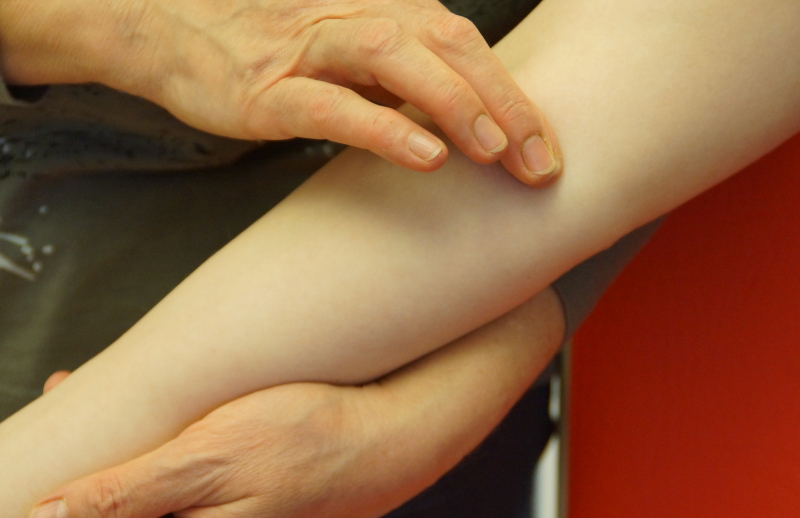 Transverse friction massage golfer elbow
Transverse friction massage golfer elbow
Keep the elbow in complete elbow extension. Look for the medial epicondyle and proceed to the front of it, where we find the common flexor origin. The deep friction is the normal execution. Don’t palpate too far lateral in order to avoid pressure on the median nerve. Also make sure not to palpate too far medial either ; we don’t need to friction the medial epicondyle.
Putting the finger 1-2 cm more distally from the medial epicondyle allows us to find the musculotendinous junction.
Remark :
>>> at the tenoperiosteal junction deep friction is a straight line movement and the feel is
rather hard.
>>> at the musculotendinous junction the deep friction is a more ample round movement, and the feel is softer.
Infiltration ?
>>> Click here to get easy access to the e-learning platform >>>
Summary video
